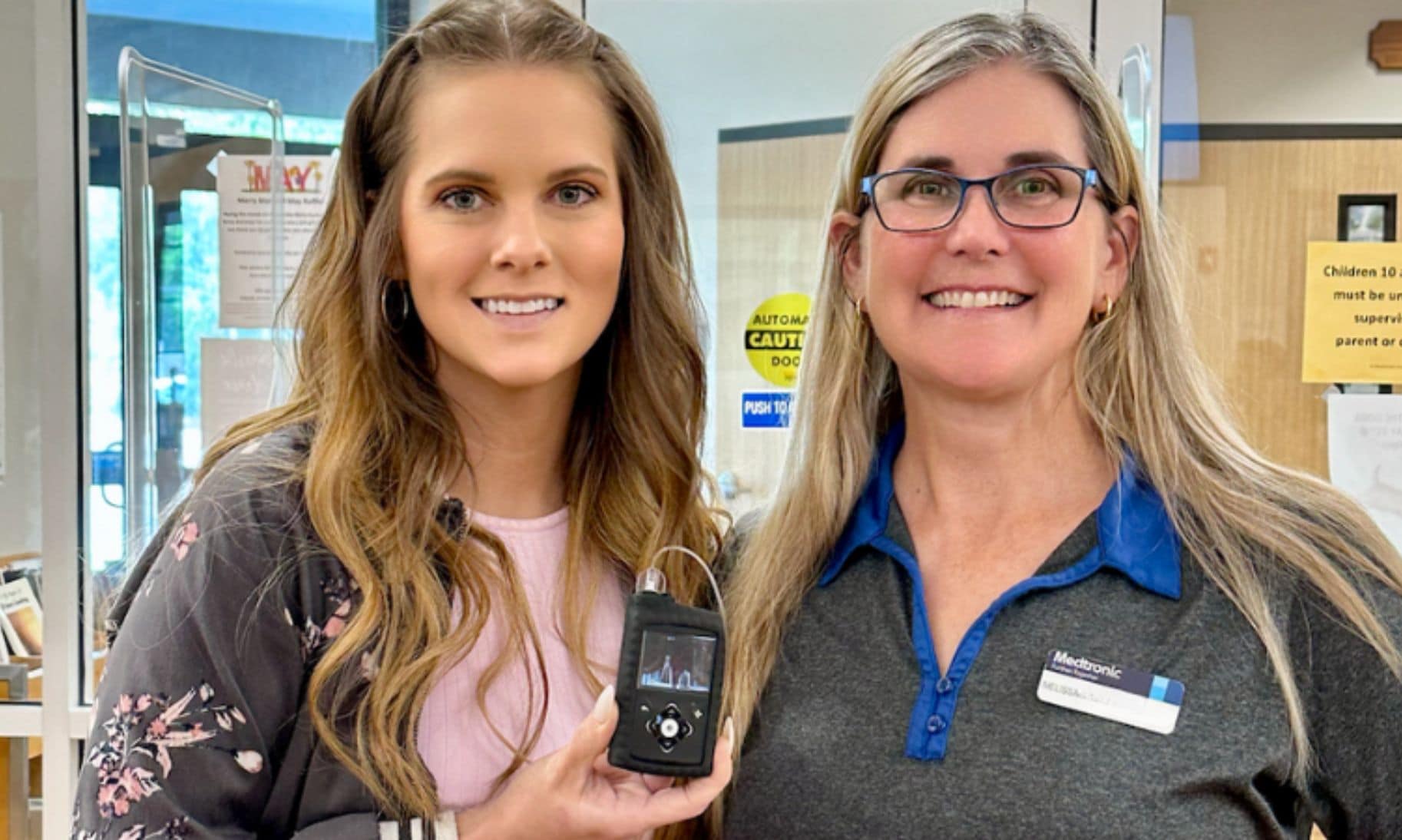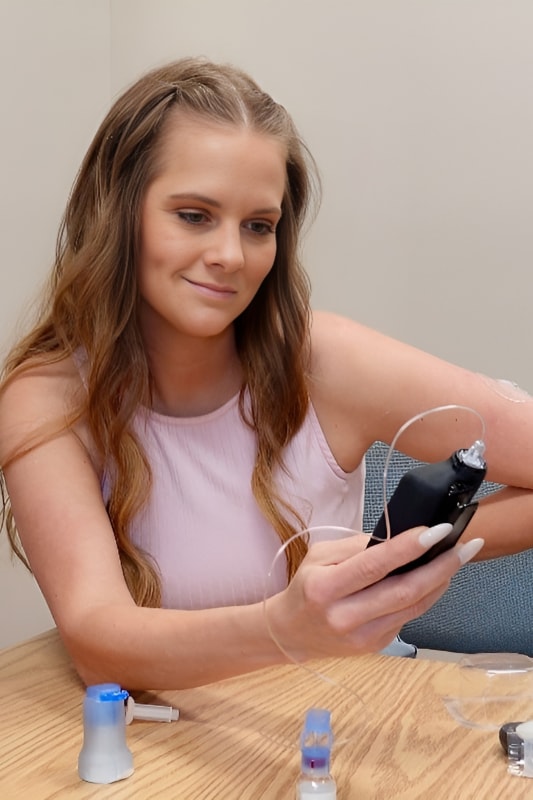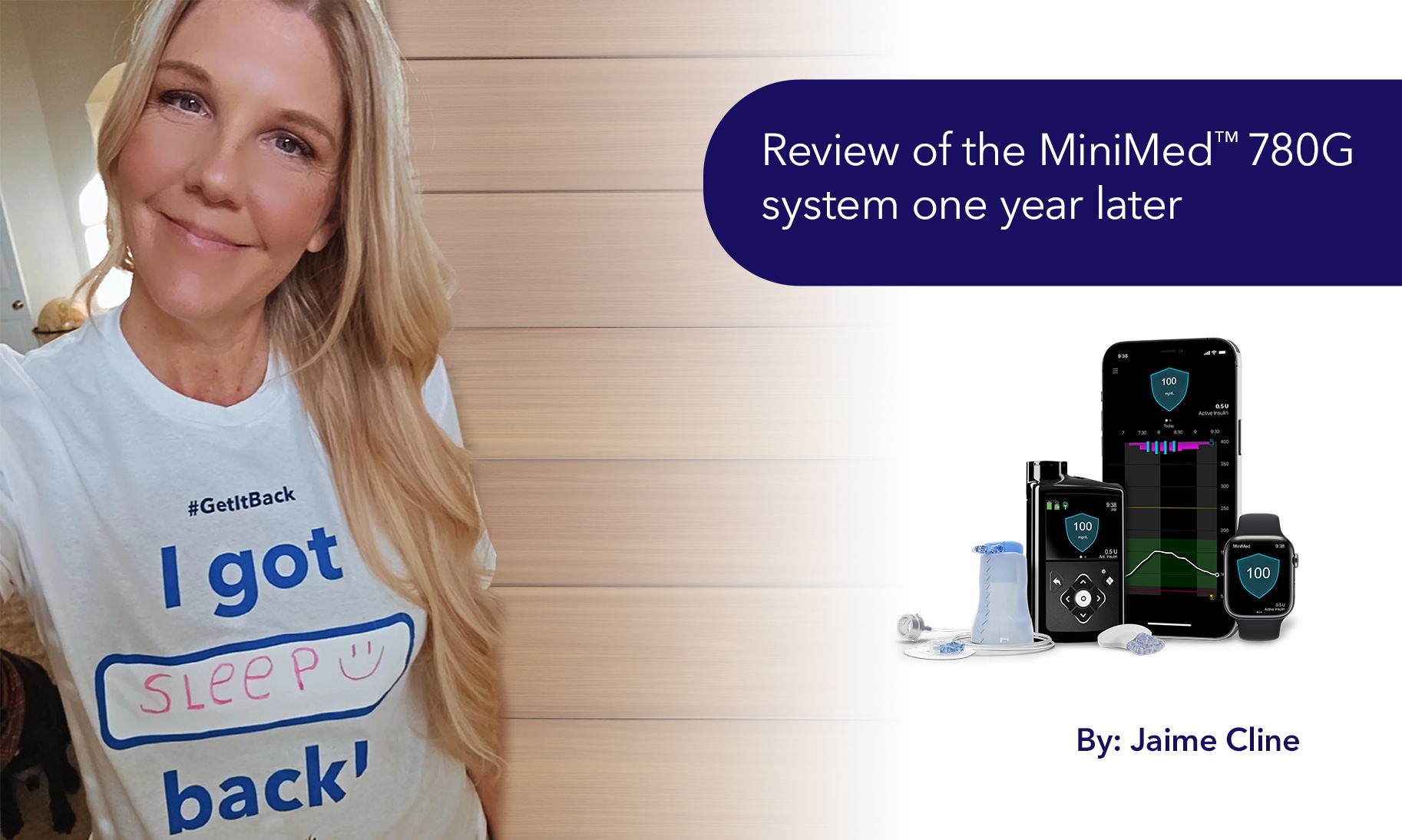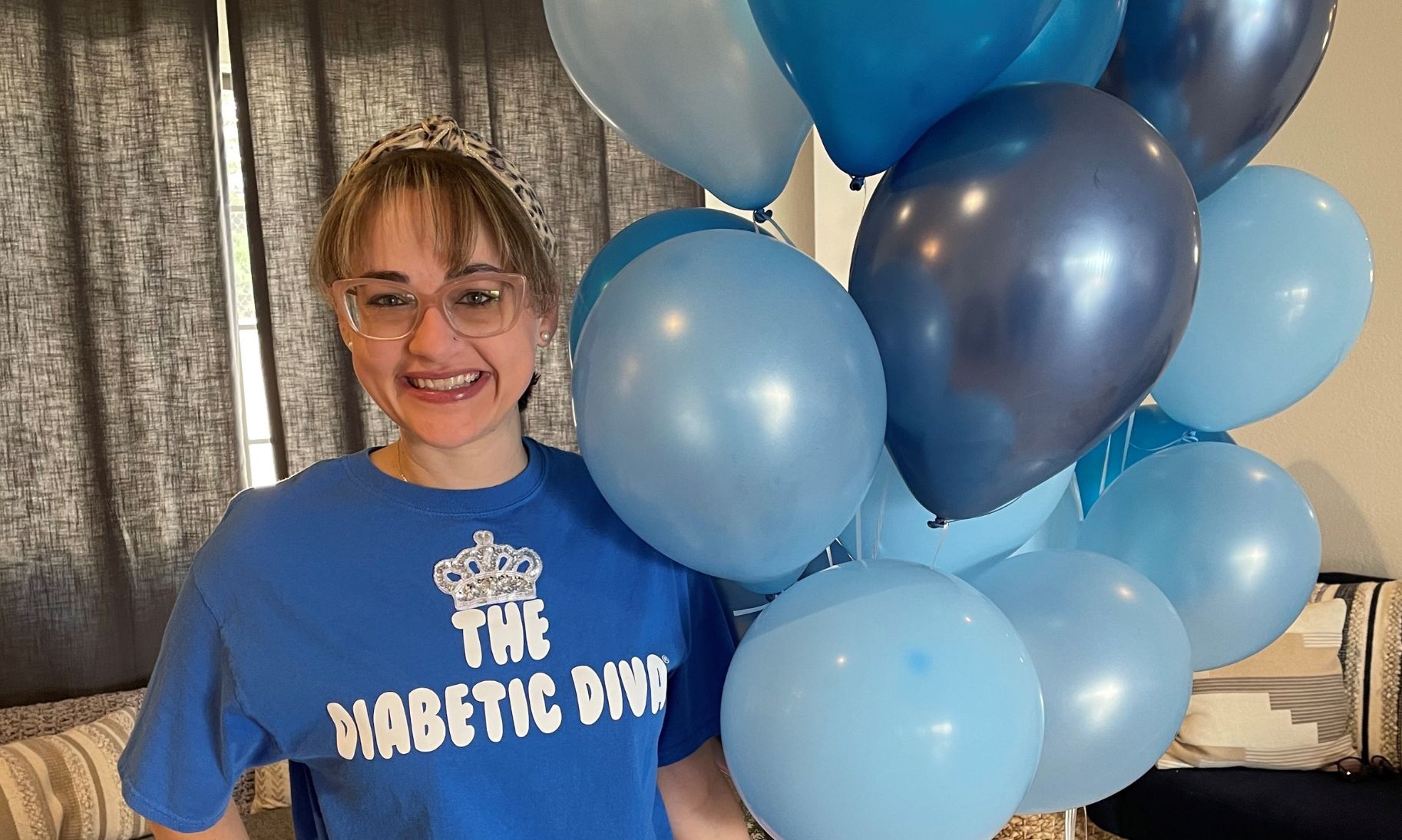Transitioning from insulin injections to an automated insulin delivery system

From insulin injections to insulin pump
My name is Mattie and I’m a #MedtronicPartner. After 22 years of managing my type 1 diabetes with multiple daily insulin injections, I recently took a leap that I once never thought I would — going to an automated insulin delivery (AID) system.
This decision was not one I made lightly. For years, I held on to the belief that I would never be comfortable with the idea of being connected to a device 24/7. However, life as we know it has a way of shifting perspectives. Now, I’m sharing how my transition from the InPen™ smart insulin pen to the MiniMed™ 780G system has transformed my relationship with diabetes.
The reluctance: Why I initially avoided insulin pump therapy
To fully understand my journey, I need to start with why I avoided an insulin pump for so long.
For most of my life with diabetes, the thought of wearing a device that everyone could see felt like a heavy burden. There was a certain level of embarrassment and self-consciousness that I couldn’t shake. I had become comfortable with my insulin injection routine, finding solace in the fact that my condition was mostly invisible to the outside world.
The mental and emotional toll of diabetes is often as challenging as the physical aspects. For me, avoiding a pump was a way of distancing myself from my diagnosis. I didn’t want to be defined by the technology attached to my body, and I certainly didn’t want others to define me that way either.

The turning point: Embracing the MiniMed™ 780G system
Fast forward to today, where I am now using the MiniMed™ 780G system, and it’s safe to say that my perspective has drastically changed. As life got busier — with the responsibilities of being a full-time worker, a mother, and a wife — managing type 1 diabetes with insulin injections became increasingly challenging.
The daily routine of multiple injections and constant blood sugar monitoring was exhausting and stressful. I needed a change, something that could provide better control and lessen the mental load.
After much research and a lot of self-reflection, I decided to give the MiniMed™ 780G system a try. This decision wasn’t just about the technology; it was about taking a step towards a better quality of life. The convenience and support that the AID system promised were too significant to ignore, especially given my increasingly demanding life.
The transition: From InPen™ to the MiniMed™ 780G system
The transition itself was smoother than I anticipated. Initially, I was worried about the learning curve and how different it would feel to be attached to a pump. However, the support from my healthcare team and the user-friendly design of the MiniMed™ 780G system made the process manageable.
One of the biggest surprises for me was how quickly I adapted to the insulin pump. Yes, there were moments of frustration as I learned to navigate this new system, but those moments were far outweighed by the benefits.
I found that I no longer felt burdened by the constant need to actively manage my blood sugar. The MiniMed™ 780G system took over that responsibility, allowing me to focus on other aspects of my life.

A new sense of freedom
One of the most profound changes I’ve experienced since switching from an insulin pen to the MiniMed™ 780G system is a new sense of freedom. The pump has stabilized my blood sugar and lessened the mental strain that comes with diabetes.
I no longer feel as “connected” to my diabetes, both physically and mentally. Instead, I feel lighter, knowing that the system is constantly working in the background to keep me in range.
I also noticed a significant decrease in the anxiety I used to feel around managing my diabetes. The system’s ability to predict and help prevent highs and lows has allowed me to trust the technology in ways I never thought possible. This trust has led to better sleep, more energy, and a greater overall sense of wellbeing.†
Feeling less connected than ever before
Reflecting on my journey, I’m incredibly grateful for making this change. Transitioning from insulin injections to the MiniMed™ 780G system hasn’t just helped me with better glucose control; it’s also given me a surprising sense of freedom.
I used to worry that wearing an insulin pump would make me feel constantly connected to my diabetes, but ironically, I now feel less connected to it than ever before. The pump has become so seamless in my life that I barely notice it, and this newfound ease has brought me a confidence I never expected.
What to know about transitioning
If you’re considering a similar transition, my advice is to be open to the possibilities that new technology can offer. It’s okay to be hesitant, and it’s okay to take your time in making the decision. For me, the move to pump therapy was about reclaiming control over my health and finding a new way to live with type 1 diabetes that didn’t feel like a constant battle.
Diabetes is a lifelong journey, and every step we take in managing it is deeply personal. I’m happy to say that this step has brought me closer to the life I want to live—one where diabetes doesn’t define me, but rather, where I define how I live with diabetes.
Guest author: Mattie Fisher, #MedtronicPartner
Footnotes
† Refers to SmartGuard™ feature. Individual results may vary.
InPen Safety Information
The InPen is a reusable insulin pen for people living with diabetes. It can be used to deliver insulin, help calculate insulin doses, and estimate carbohydrates for meals. Those under the age of 7 should only use the device with an adult’s supervision. A healthcare provider must prescribe InPen, provide dosage settings, and discuss all potential benefits and risks. Using the device with incorrect therapy settings may lead to severe highs and lows. The InPen should not be used by those unable to test blood glucose levels or the visually impaired. For additional product and important safety information, click here.
MiniMed™ 780G system with SmartGuard™ technology with Guardian™ 4 Sensor
The MiniMed™ 780G system is intended for continuous delivery of basal insulin at selectable rates, and the administration of insulin boluses at selectable amounts for the management of type 1 diabetes mellitus in persons seven years of age and older requiring insulin as well as for the continuous monitoring and trending of glucose levels in the fluid under the skin. The MiniMed™ 780G System includes SmartGuard™ technology, which can be programmed to automatically adjust insulin delivery based on the continuous glucose monitoring (CGM) sensor glucose values and can suspend delivery of insulin when the SG value falls below or is predicted to fall below predefined threshold values.
The Medtronic MiniMed™ 780G System consists of the following devices: MiniMed™ 780G Insulin Pump, the Guardian™ 4 Transmitter, the Guardian™ 4 Sensor, One-press serter, the Accu-Chek™ Guide Link blood glucose meter, and the Accu-Chek™ Guide Test Strips. The system requires a prescription from a healthcare professional.
The Guardian™ 4 Sensor is intended for use with the MiniMed™ 780G system and the Guardian 4 transmitter to monitor glucose levels for the management of diabetes. The sensor is intended for single use and requires a prescription. The Guardian™ (4) sensor is indicated for up to seven days of continuous use.
The Guardian™ 4 sensor is not intended to be used directly to make therapy adjustments while the MiniMed™ 780G is operating in manual mode. All therapy adjustments in manual mode should be based on measurements obtained using a blood glucose meter and not on values provided by the Guardian™ 4 sensor. The Guardian™ 4 sensor has been studied and is approved for use in patients ages 7 years and older and in the arm insertion site only. Do not use the Guardian™ 4 sensor in the abdomen or other body sites including the buttocks, due to unknown or different performance that could result in hypoglycemia or hyperglycemia.
WARNING: Do not use the SmartGuard™ feature for people who require less than 8 units or more than 250 units of total daily insulin per day. A total daily dose of at least 8 units, but no more than 250 units, is required to operate in the SmartGuard™ feature. |



